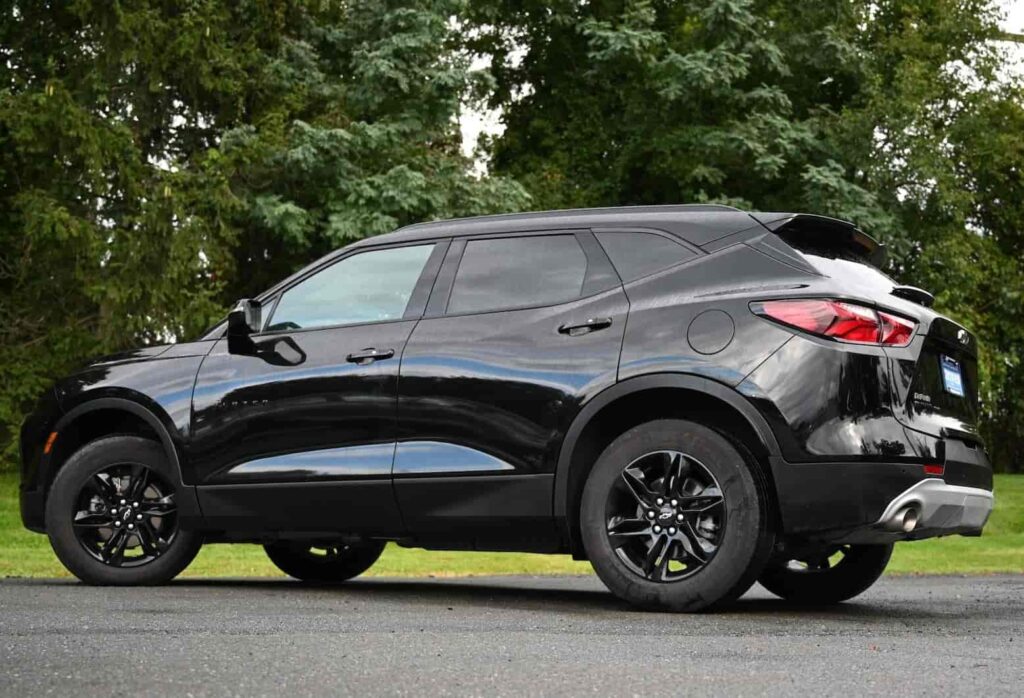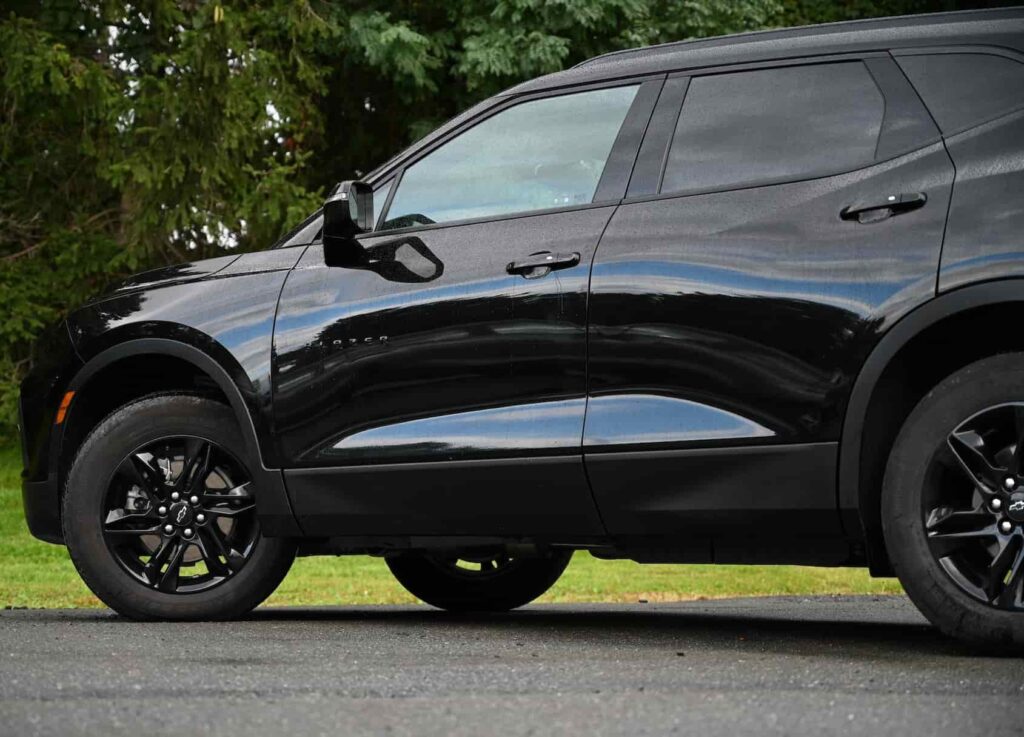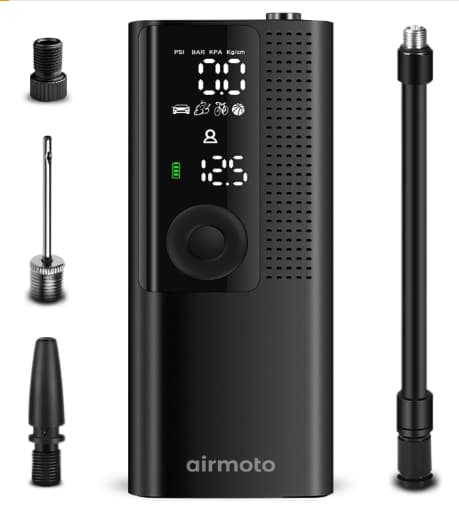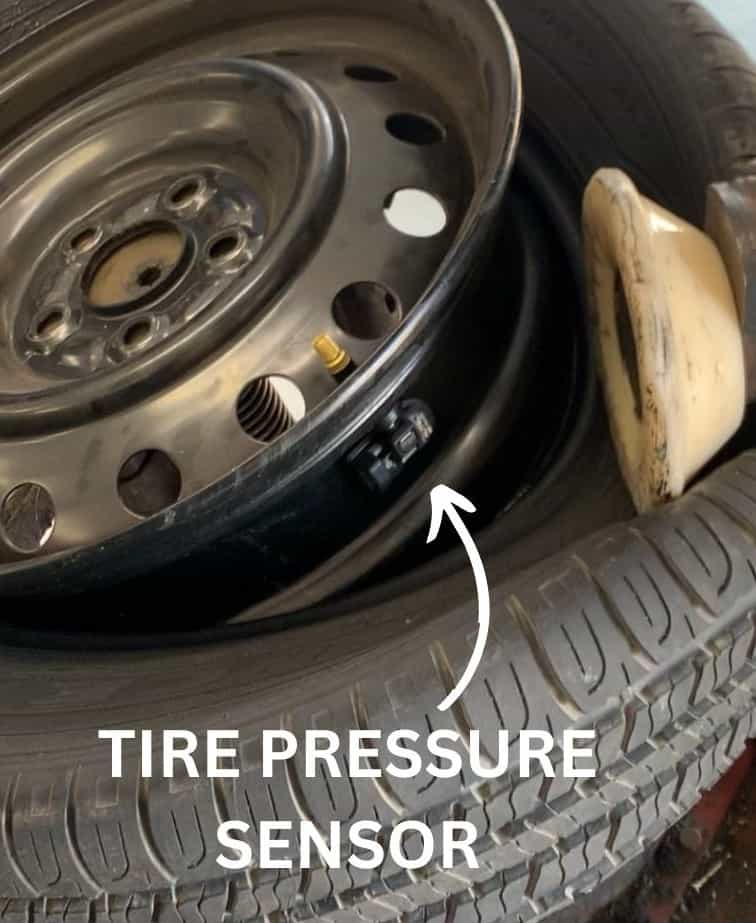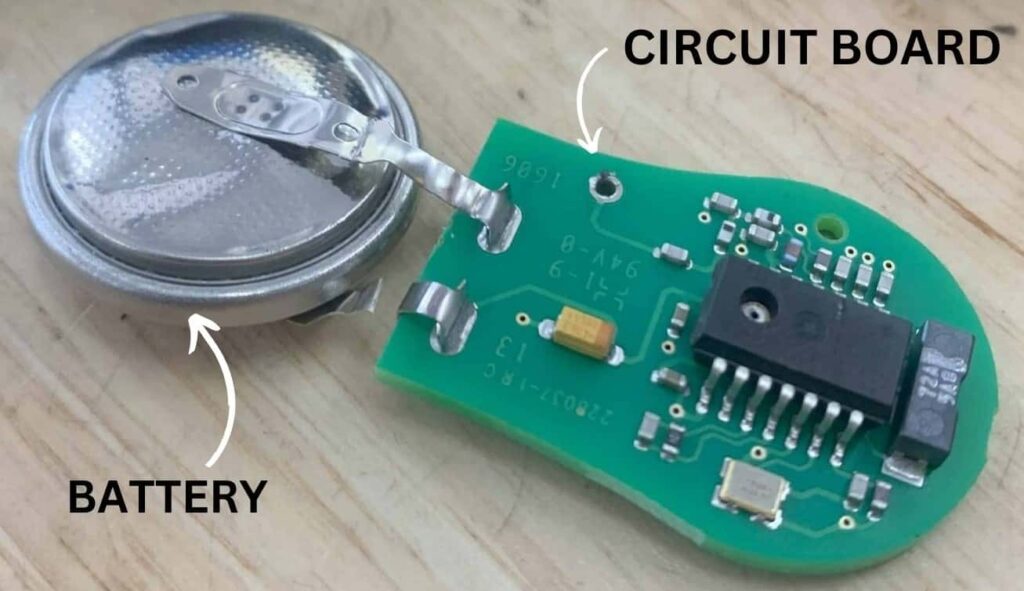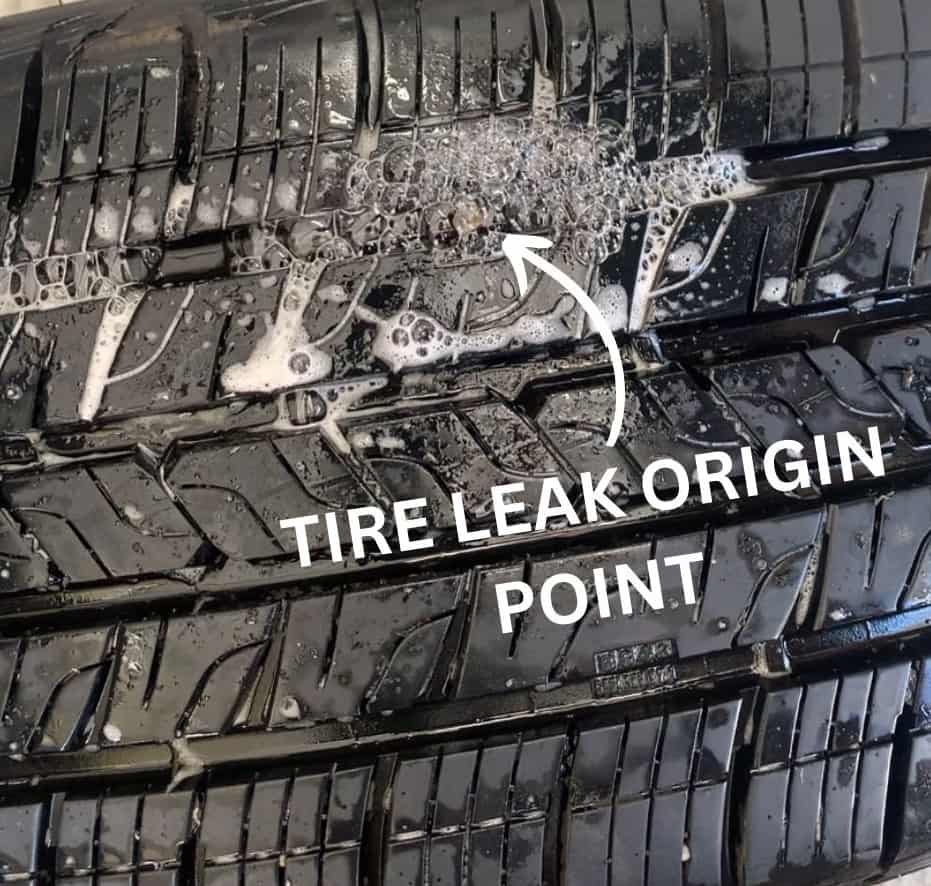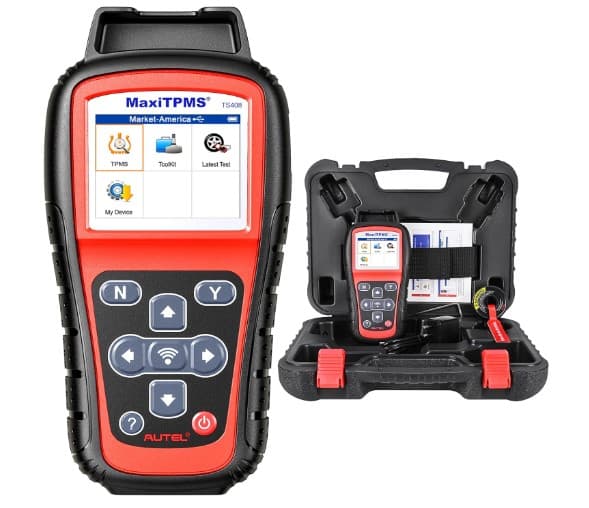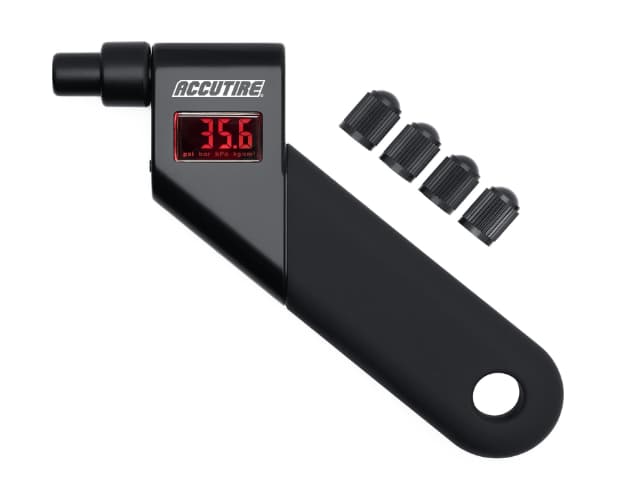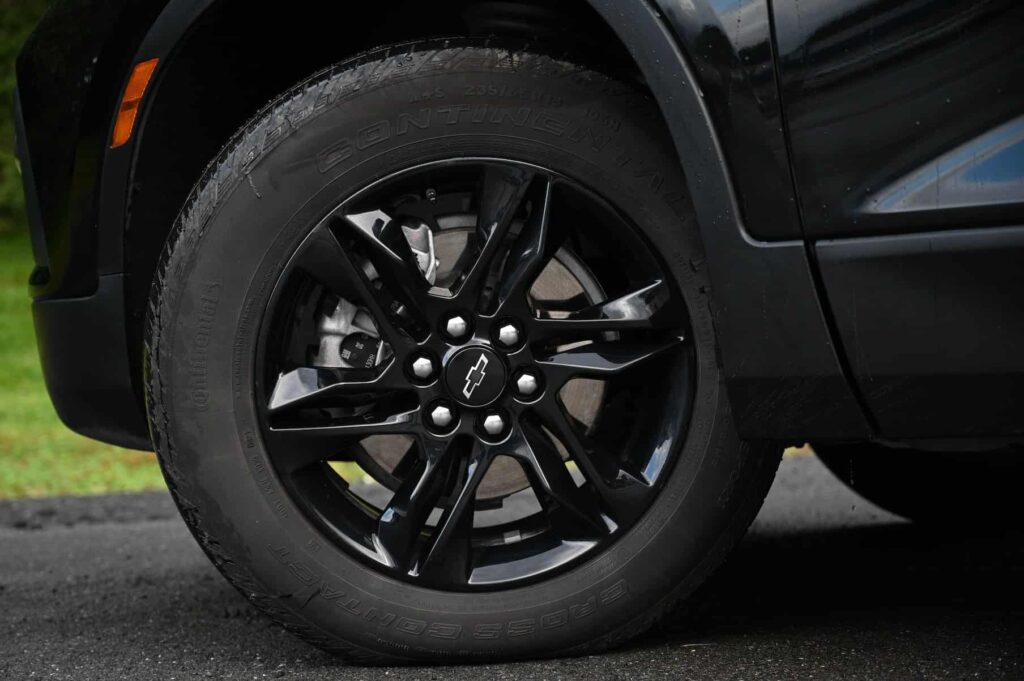What is the Chevrolet Trailblazer TPMS?
The tire pressure monitoring system (TPMS) in the Chevrolet Trailblazer is designed to ensure your safety while driving. It evaluates the air pressure and temperature of all four tires and showcases its results on the Chevy Trailblazer’s display panel. Having this feature in optimal condition is crucial for the car’s safety and efficient operation. The system comprises four primary parts: tire pressure sensors, the TPMS data receiver, the onboard computer, and alerts for low tire pressure.
How Does the Chevrolet Trailblazer TPMS Work?
Sensor Placement: In every Chevy Trailblazer tire, sensors exist at the base of each valve stem. They remain hidden unless the tire is detached from the wheel. Their primary function is to continuously monitor both the air pressure and temperature inside the tire and then send this data to its TPMS receiver via radio wave transmission.
Chevrolet TPMS Receiver Module: This unit is responsible for receiving the data from the tire pressure sensors in each tire. After collecting the data, it processes and categorizes it before relaying it to the Trailblazer’s ECM.
Chevrolet Trailblazer ECM: The Chevrolet Trailblazer’s ECM is the SUV’s main computer which processes the tire data it receives. It then compares this data with Chevrolet’s standard tire specifications to ensure everything is in order.
Underinflated Tire Warning: Should the air pressure in the Chevy Trailblazer’s tires fall below the manufacturer’s recommended levels, a yellow exclamation point symbol will appear on the SUV’s dashboard to warn the driver of low air pressure.
TPMS System Self-Check: The tire pressure monitoring system in the Chevrolet Trailblazer is designed to run its own diagnostics. If it detects any issues, the underinflated tire warning will blink for 60 seconds, indicating a TPMS malfunction.
Steps to Reset the Chevrolet Trailblazer TPMS
The Chevy Trailblazer does not have a tire pressure reset button.
Adjust the air pressure in the Chevy Trailblazer tires to the suggested levels when the SUV hasn’t been used recently so the tires are in a cold state.
Operate the Chevrolet Trailblazer for a short duration, maintaining speeds over 25 Mph.
Steps to Relearn Chevrolet Trailblazer TPMS Sensors
Upon conducting tire rotations, replacing tire pressure sensors, or performing any tire/wheel maintenance, adhere to these steps:
Inflate all four tires to around 40 Psi.
Switch the Chevy Trailblazer’s ignition to ON, keeping the engine off. Electricity on, engine off.
Push the Menu Button and opt for the Vehicle Information Menu displayed on the screen.
Turn the scroll wheel until you reach the TIRE PRESSURE MENU.
When on the TIRE PRESSURE MENU, press and hold the SET/CLR button.
A prompt will show up asking, “Are you sure that you want to relearn?“.
Choose “Yes”.
Upon success, you’ll hear two horn beeps and the display will indicate “TIRE LEARNING ACTIVE”.
Approach the driver side front tire and let out air until you hear the horn.
Do the same for the passenger’s side front tire, then the passenger’s rear tire, and lastly the driver’s rear tire.
Once done, the on-screen message will vanish.
Turn off the ignition and adjust the air pressure back to the recommended levels.
2023 Chevrolet Trailblazer Tire Pressures
TIRE SIZE | FRONT PSI | REAR PSI |
225/60R17 | 35 | 35 |
225/55R18 | 35 | 35 |
215/65R16 | 35 | 35 |
Why Does the Chevrolet Trailblazer's Low Tire Pressure Warning Light Up?
To high or too low air pressure in tires
Air pressure leaking
Missing tire pressure sensors
Sensor batteries running low or malfunctioning
Dysfunctions in the TPMS communication system or Trailblazer ECM
Electromagnetic disturbances
Environmental weather or altitude changes
Surpassing the vehicle’s weight threshold
Implementing tire chains
Windows with excessive tinting
Road temperature levels
Tires of differing dimensions
Wheels unaligned
TPMS receiver module or ECM software errors
Tire dry-rot, side-wall bubbles, or punctures
Valve stem breaks
Chevrolet Trailblazer Tire Pressure Sensor Batteries
The Chevrolet Trailblazer has four tire pressure sensors with batteries inside. The spare tire does not have a sensor. These sensors have a black plastic cover and attach to the tire’s valve stem. The batteries inside can’t be charged or replaced. When they run out, you need to change the whole sensor. Typically, these batteries last 5 to 10 years or up to 150,000 miles.
Troubleshooting the Chevrolet Trailblazer's Tire Pressure Light Problems
If the low tire pressure indicator on the Chevy Trailblazer illuminates, initiate the usual TPMS reset process. Should this method fail, try the TPMS relearn process. For persistent issues, these suggestions combined with a bit of experimentation can help address and diagnose your tire light.
TIP 1: DO YOU SUSPECT AN AIR LEAK IN YOUR TIRE?
To determine whether a tire leak is causing the low pressure notification, carry out the Chevrolet Trailblazer TPMS reset instructions. Should the tire alert turn off momentarily only to reappear, this indicates the system is operational, but a tire could be deflating. Conversely, if the alert persists even when all tires are properly filled, a fault might be present in a tire pressure sensor.
TIP 2: HOW TO FIND A LEAK WITH SOAP AND WATER
To determine the precise source of an air leak in a deflating tire, adhere to the following instructions:
REQUIRED TOOLS: An air compressor or air pump, a sprayer bottle, water, and soap.
Pump up the tire to a minimum of 35 Psi.
Create a mixture with water and soap (detergent, dish soap, or even window cleaner works).
Spray the tire generously with this soapy concoction, paying extra attention to the valve and the point where the tire meets the wheel.
Watch the tire closely for the emergence of bubbles.
Upon seeing bubbles, trace them back to find the leak’s starting point.
Based on the location of the leak: If it’s situated on the tread, consider using a plug or patch for repair. If it’s found at the tire-wheel intersection (bead), the tire should be taken off to seal the bead area. If the issue lies with the valve stem, it has to be replaced.
TIP 3: TESTING EACH TIRE SENSOR WITH THE HELP OF A TPMS PROGRAMMING TOOL
Even with all tires of your Chevrolet Trailblazer inflated to the advised 35 Psi, if a low tire pressure alert persists, it’s likely due to a tire pressure sensor with a weakening or depleted battery. To gauge the health of each sensor’s battery, a TPMS programming tool or an OBD2 diagnostic tool is essential. The TPMS programmer can scrutinize individual sensors, whereas the OBD2 tool only provides diagnostic codes pointing to the affected tire. The TPMS programming tool is a better option in our opinion because it provides a comprehensive report for each sensor. If this report highlights a dwindling battery, communication glitches, or anomalous readings (such as the tire temperature at -131 degrees), it’s a cue to replace that TPMS sensor.
TIP 4: HOW TO REBOOT THE CHEVY TRAILBLAZER ECM
Whenever the low tire pressure alert is triggered in your Chevrolet Trailblazer, the vehicle’s internal computer records this event as a diagnostic trouble code (DTC). The following method is akin to restarting a malfunctioning computer to rectify an issue. To reset your Chevy Trailblazer system, follow these steps:
Switch off the engine and all electronics of your Chevrolet Trailblazer.
Gently unfasten and then remove the negative terminal from the Trailblazer’s main 12 Volt battery.
Connect the negative terminal back to the 12 Volt battery and ensure it’s tightly secured.
Proceed to drive steadily for around 30 minutes at a speed of 50 Mph.
If the low tire pressure alert turns off and then comes back on during your drive, it could suggest a tire pressure sensor with a fading battery or an actual drop in tire pressure.
TIP 5: BRINGING A CHEVY TRAILBLAZER'S TIRE SENSOR BACK TO LIFE
Tire pressure sensors can occasionally act up. Even if a Chevrolet Trailblazer’s tire has the correct pressure and the sensor battery is in good shape, the low pressure alert may persist. This might imply the TPMS sensor is in a dormant state. To reawaken it, follow these instructions:
Deflate the concerning tire by 20 Psi. (If it’s at 40 psi, drop the pressure to 20 psi temporarily)
Pump the tire to its suggested cold pressure, adding an extra 5 Psi. (E.g., if the recommended pressure is 35 Psi, inflate it to 40 Psi.)
Drive your Chevrolet Trailblazer at speeds exceeding 25 Mph for a duration of 10 minutes.
Readjust the tire pressure to 35 Psi.
Drive the Trailblazer again for another 10 minutes.
TIP 6: WHY YOUR CHEVY TRAILBLAZER'S TIRE PRESSURE VARIES WITH TEMPERATURE
Tire pressure reacts to external temperature variations. Typically, a 10°F change in temperature can result in a tire pressure shift of about 1-2 psi. For instance, if your Chevrolet Trailblazer remains in a 83°F setting overnight and the temperature drops to 43°F by dawn, the tire pressure could decline by 4-8 psi. On the flip side, when it gets hotter and tires are driven on, their pressure increases. This happens because air particles inside the rubber tires contract in cold conditions and expand when heated, causing a change in the tire air pressure. As a result, the Chevy Trailblazer’s low tire warning might activate with cold tires and deactivate once they’re warmed up from driving. To avert this, it’s advisable to adjust your Trailblazer’s tire pressures to 35 Psi when they’re cold and haven’t been driven on for a few hours. If you adjust your tires when they’re hot, you will end up overinflating the tires which can cause other issues.
CHEVROLET TRAILBLAZER TPMS QUESTIONS
CHANGING THE WHEELS AND TIRES ON THE CHEVY TRAILBLAZER
After changing the tires on your Chevrolet Trailblazer, ensure you undertake the TPMS relearn process. Should you opt to change the wheels or rims of your Trailblazer, it’s possible to transfer the original Chevrolet tire pressure sensors from the previous wheels to the new ones before mounting the tires. Once the wheels are back on the Trailblazer, proceed with the TPMS relearn protocol.
WHAT ARE THE EFFECTS OF ALTITUDE ON CHEVY TRAILBLAZER'S TIRE PRESSURE?
Tire pressure in the Chevrolet Trailblazer is sensitive to altitude changes. Statistically, for every ascent of 1,000 feet above sea level, tire pressure tends to go up by roughly 0.5 psi. Hence, a journey from the coastline to a location at 4,000 feet could lead to a pressure increase of 2 psi in your Chevy Trailblazer’s tires. Such insights are invaluable when making the most of your Chevy’s tire pressure monitoring system.
IS IT SAFE TO DRIVE THE CHEVROLET TRAILBLAZER WITH THE LOW TIRE PRESSURE ALERT ON?
We highly recommend not driving your Chevrolet Trailblazer when the low tire pressure light is illuminated, as it can be hazardous. If you notice the tire light on, it’s best to stop your vehicle as soon as it’s safe to do so, inspect all the tires, and use a tire gauge to assess the pressure in each. The warning light is activated due to insufficient air in one or multiple tires or possibly malfunctioning tire pressure sensors. It’s risky to drive when tire pressure is below the recommended level.
HOW LONG CAN YOU DRIVE THE CHEVROLET TRAILBLAZER WITH THE LOW TIRE PRESSURE ALERT ON?
There’s no fixed duration or distance that you can safely drive your Chevy Trailblazer when the low tire pressure indicator is active. The key to determining how long or how far you can drive with this alert is by pinpointing the specific issue causing the light to illuminate.
WHY IS THE CHEVROLET TRAILBLAZER LOW TIRE ALERT LIGHT FLASHING?
When the low tire pressure indicator on your Chevrolet Trailblazer blinks, it signals a TPMS malfunction. This malfunction arises from a connectivity problem between a tire pressure sensor and the vehicle’s ECM or the TPMS receiving unit. The Chevrolet Trailblazer is equipped with this self-diagnostic function to detect such issues. Causes for the TPMS malfunction could be a depleted or entirely drained battery in a tire pressure sensor, or the absence of a sensor in a wheel, like in the case of a spare tire.
WHAT ARE THE LIMITATIONS OF TIRE PLUGS?
Only use tire plugs to repair punctures located on the tire’s tread. They shouldn’t be applied to the sidewall or if the tire’s tread is entirely worn out.
TIRE SEALANTS AND TIRE PRESSURE SENSORS
Using tire sealants such as Slime or Fix-a-flat can pose risks to the electronic components of a tire pressure sensor inside the tire. After applying any sealant, ensure the TPMS sensor of the Chevrolet Trailblazer is checked for proper operation.
Everything in this article is applicable to all Chevrolet Trailblazer models and versions including the Chevrolet Trailblazer LS, LT, ACTIV, and RS.
Please note that this blog post contains Amazon affiliate links. This means that if you make a purchase through one of these links, we at TPMSRESET.COM may earn a small commission at no extra cost to you. We only recommend products that we personally use and believe in. Thank you for supporting us.
